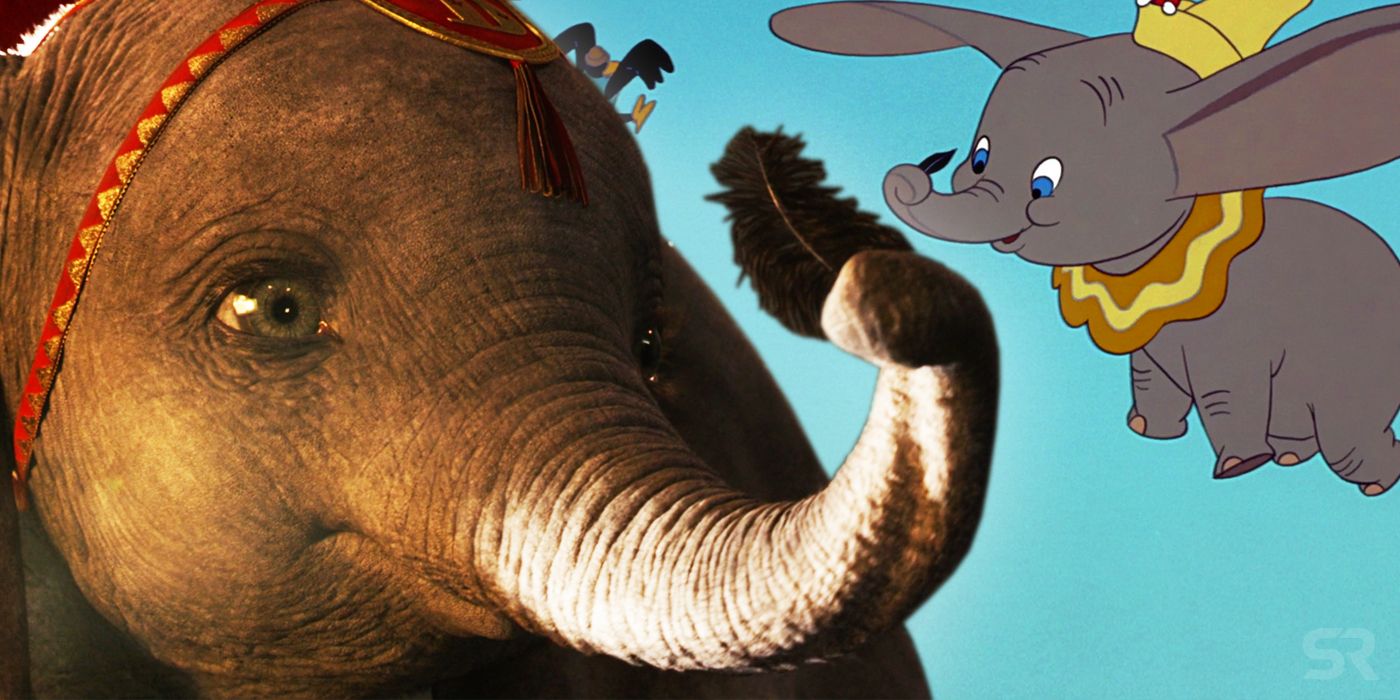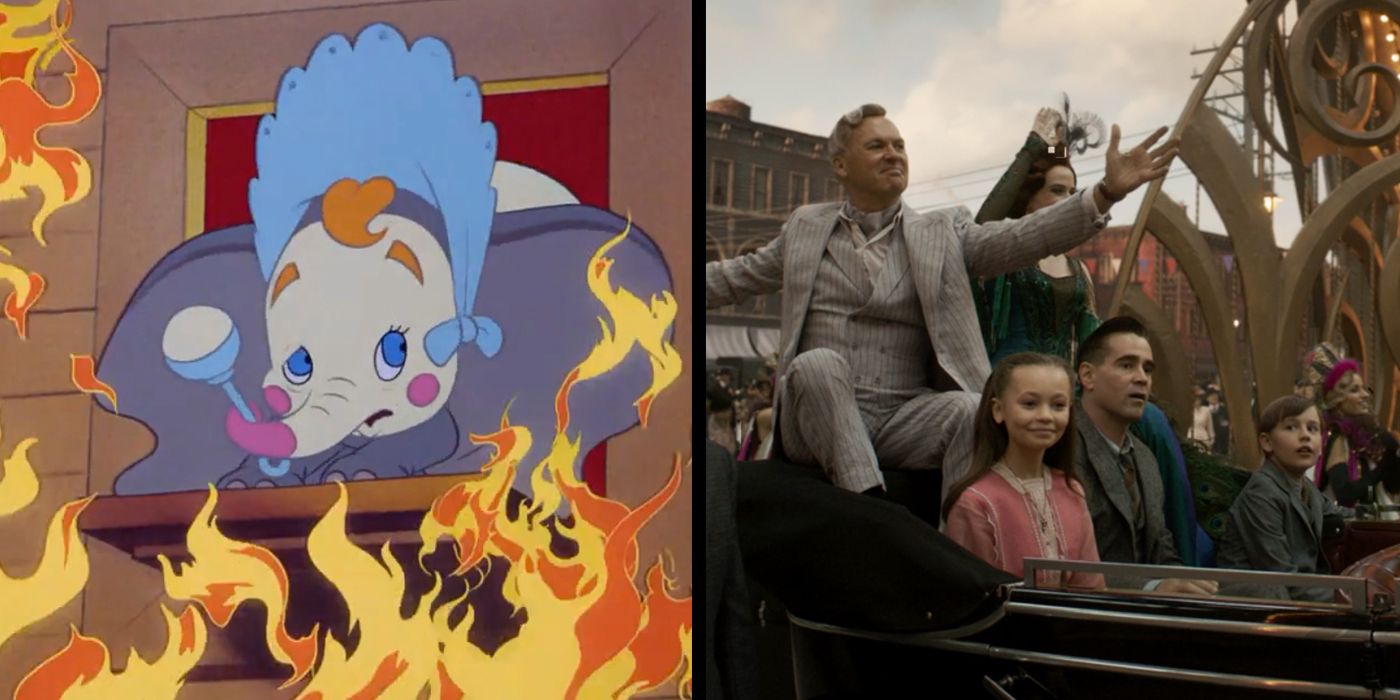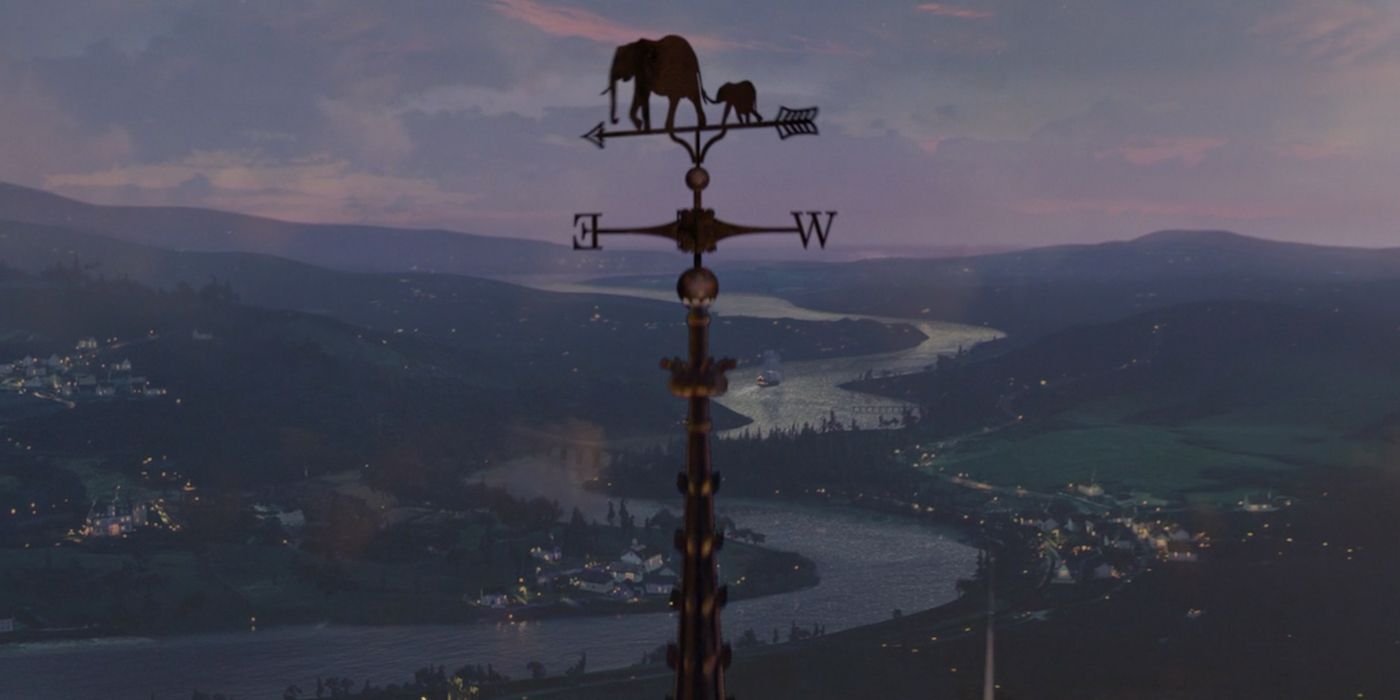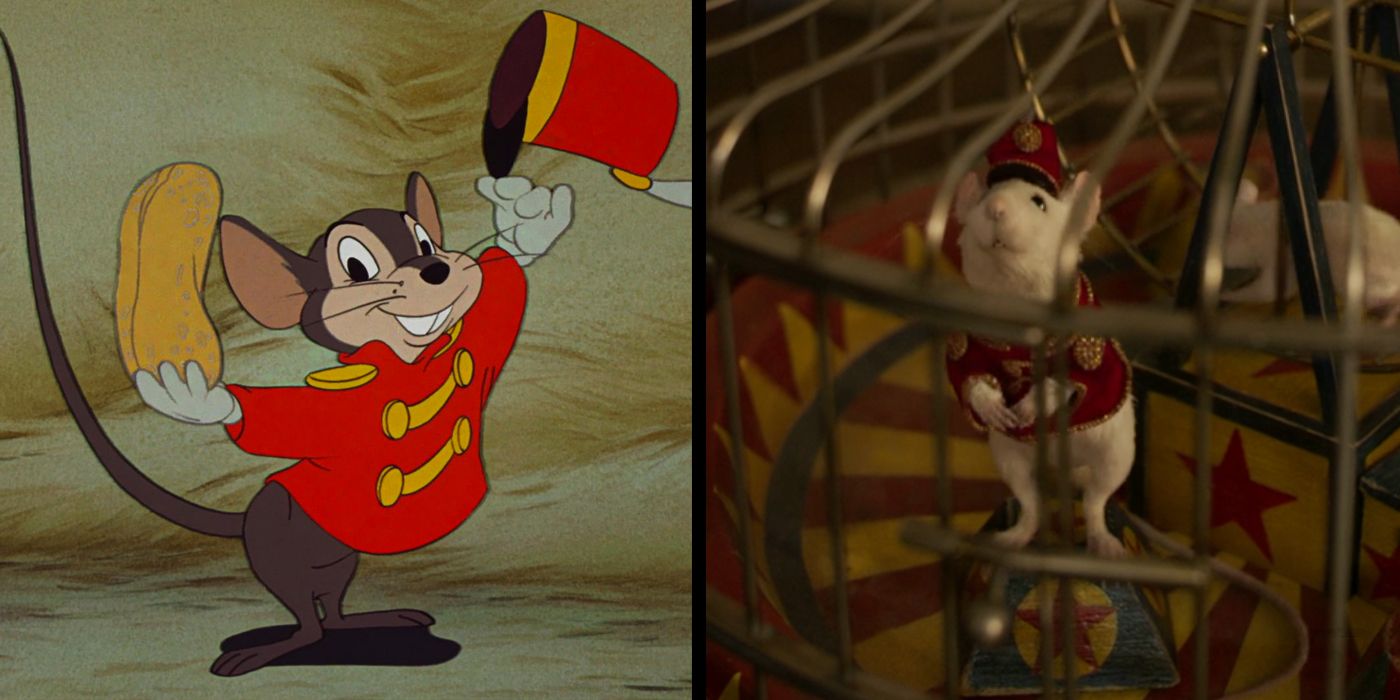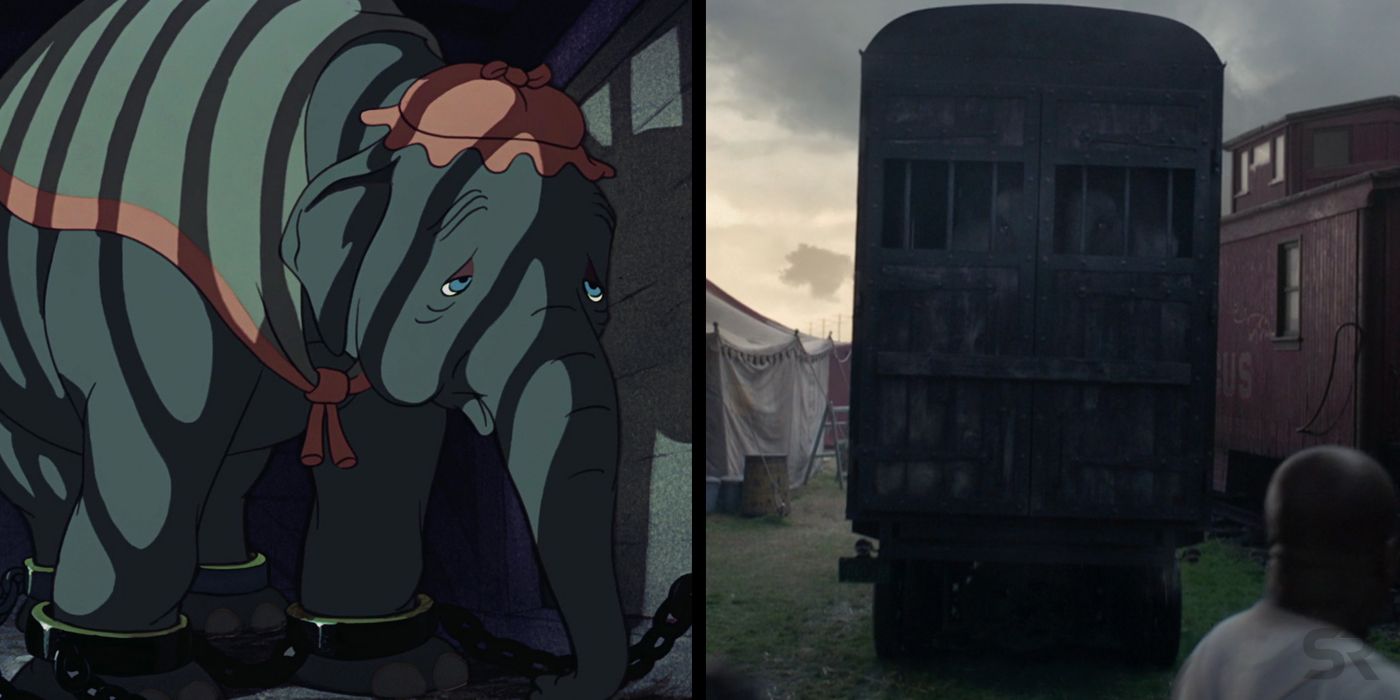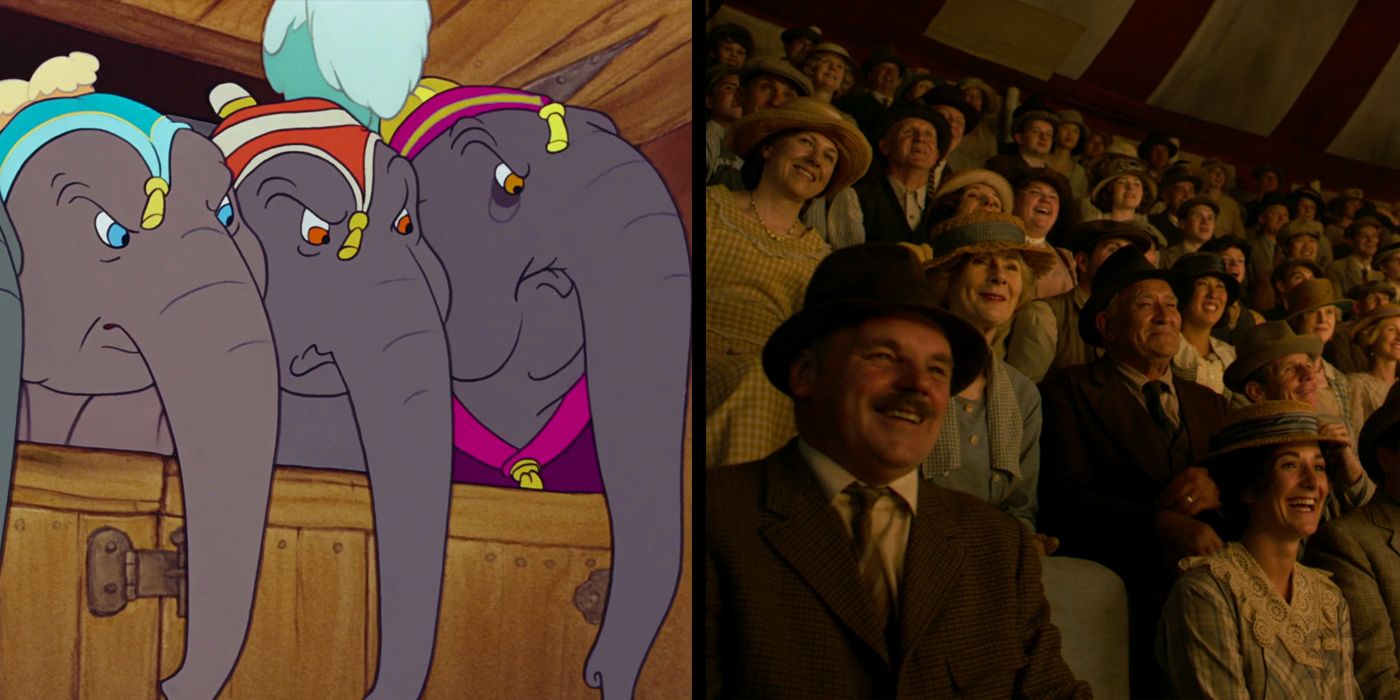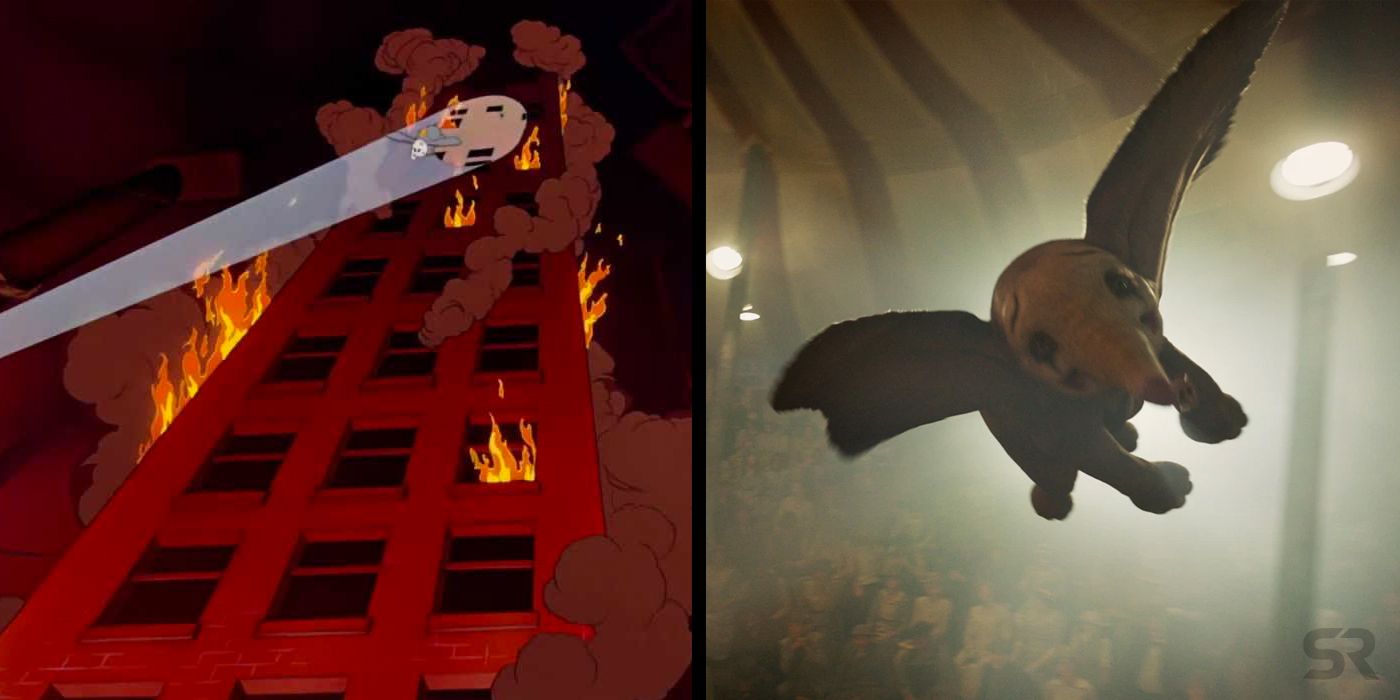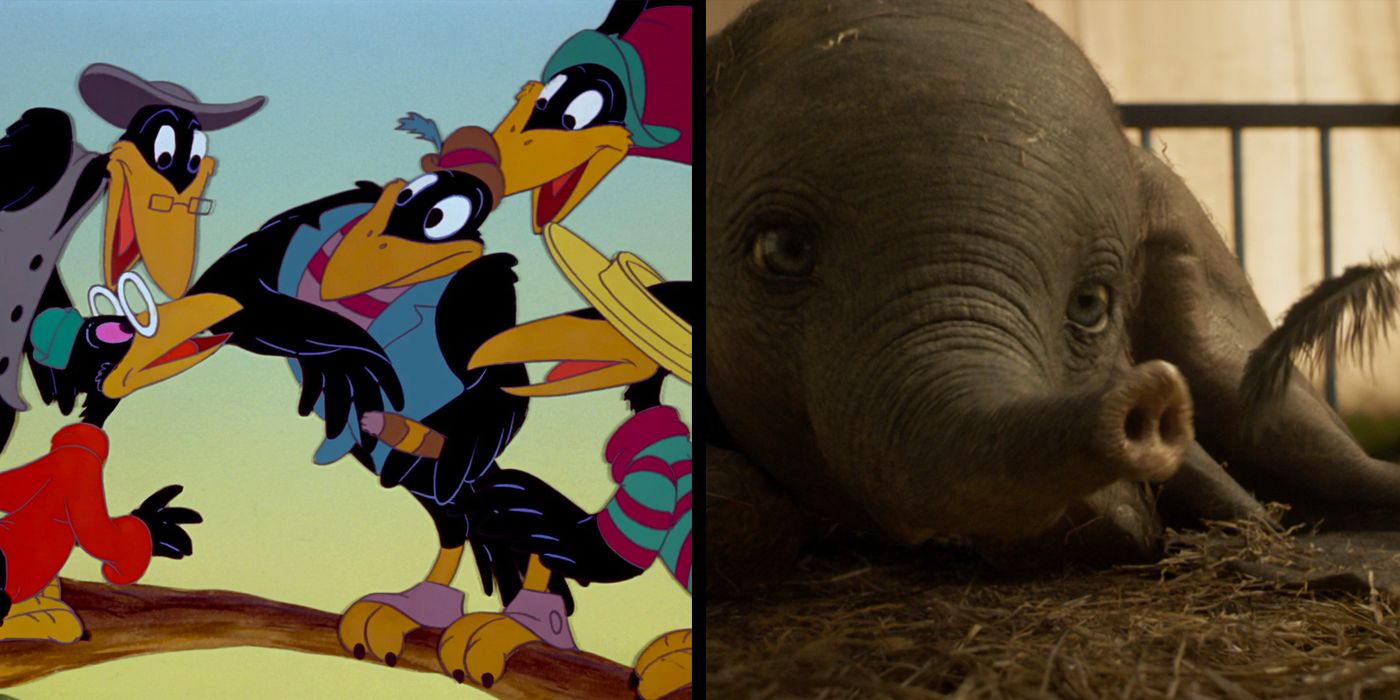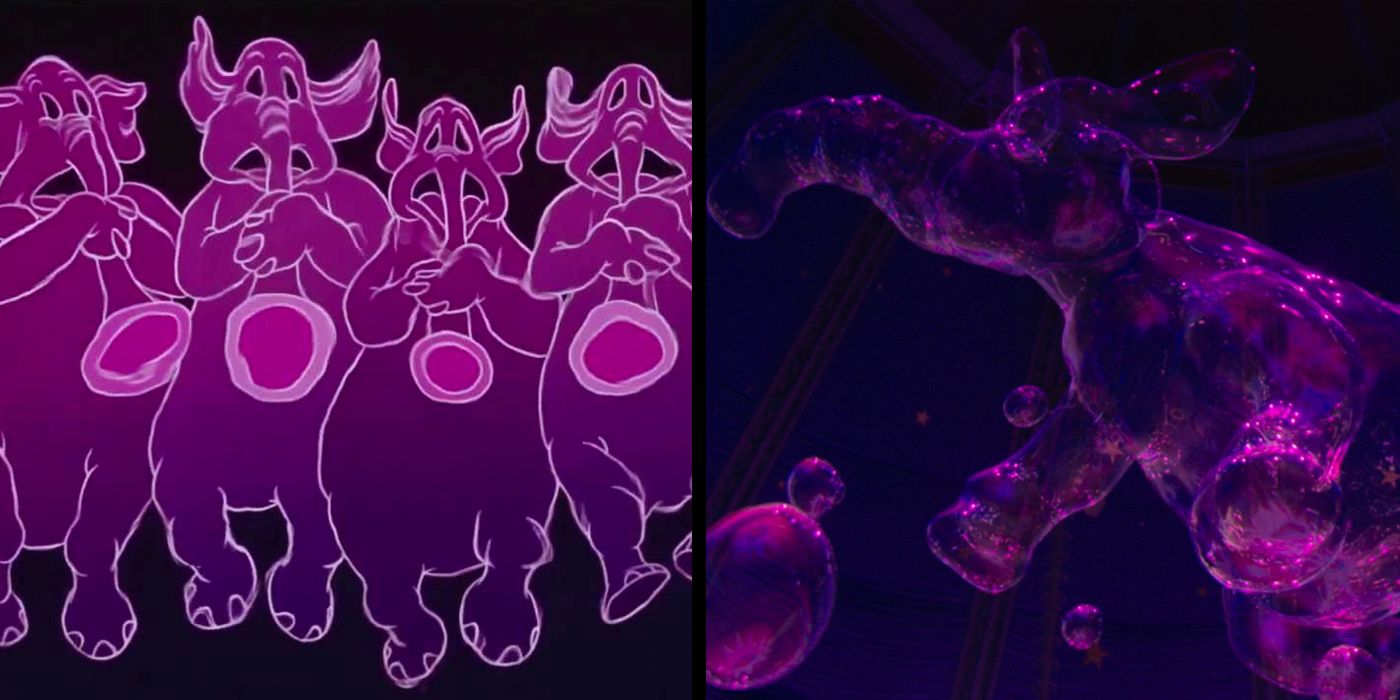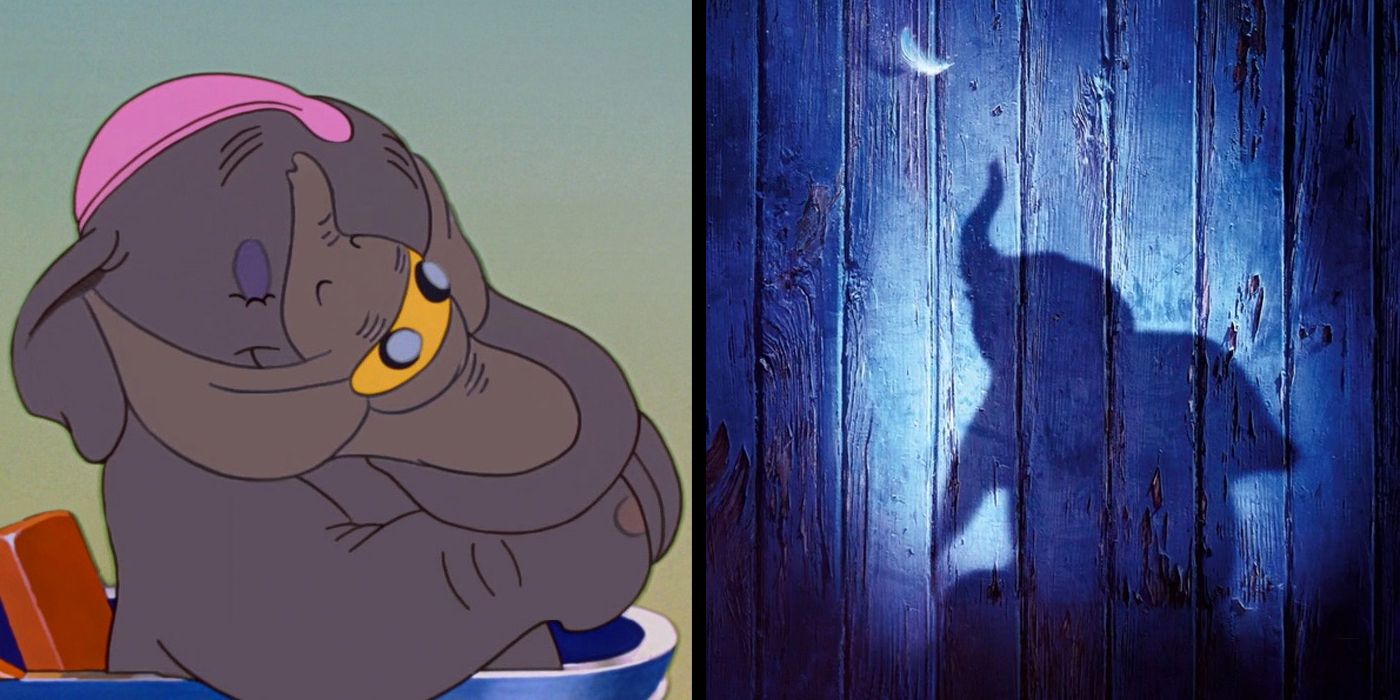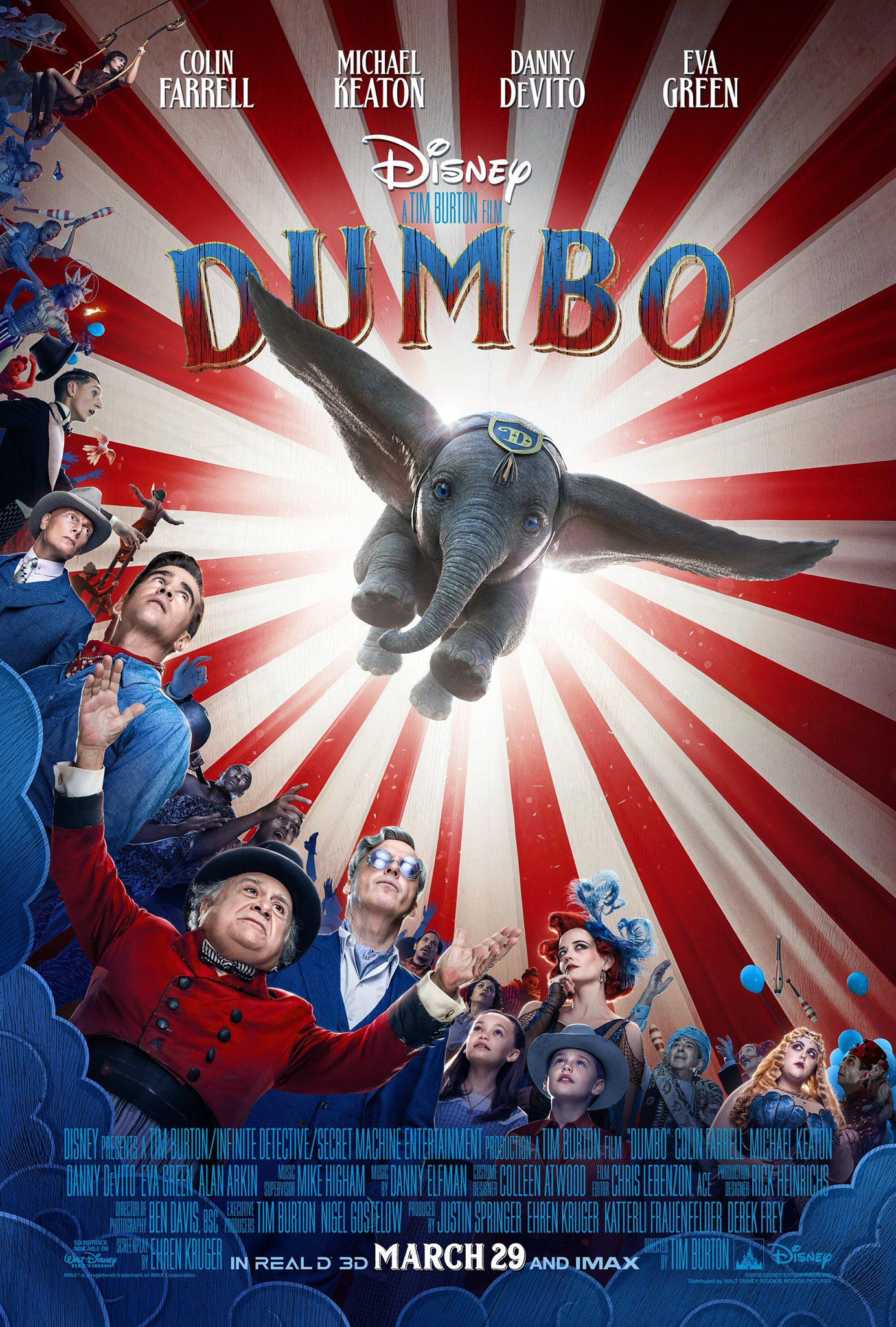WARNING: Spoilers for both versions of Dumbo.
Dumbo 2019 makes a lot of changes to the 1941 Disney classic animation, not all for the best reasons. The fourth animated feature from Walt Disney Animation Studios, Dumbo is the company's oldest film yet to be subject to a live-action reimagining and, originally coming in at just 64 minutes, there's going to be a lot of adjustments to bring it into the 21st century and the style of director Tim Burton.
A big-eared baby elephant who, following a series of punishing trials at a circus, discovers he can fly and becomes the premier attraction, Dumbo is in many ways made for Burton; he's a social outsider with a whimsical talent that eventually makes him a hero. And, to his credit, Burton's updated version does keep that at its core, even as the plot is massively expanded to the point that Dumbo 2019 is to Dumbo 1941 as Evil Dead II is to Evil Dead; the same idea in a story that's so much bigger.
Related: Read Our Dumbo Review
Dumbo is the most source-dissonant Disney remake since 2016's Pete's Dragon (and makes Burton's own quasi-sequel Alice in Wonderland from 2010 look positively faithful). As such, rather than being a case where there are simply big differences to point out, there's something greater to be said about the underlying motivation of the intermittently faithful Dumbo 2019. Why have these changes been made and why do some go so granular?
- This Page: Dumbo's Big Changes (& What The Real Remake Purpose Is)
- Page 2: How Dumbo 2019 Tries To "Fix" The Original
The Big Changes Made For Dumbo 2019
The biggest decision with Dumbo 2019 - especially in the context of the Disney - is the choice to remove all songs and talking animals. In place of these staples comes a much more standard performing arts drama led by Colin Farrell's returning World War I veteran Holt Farrier and Danny DeVito's hard-pressed circus owner Max Medici (the only explicitly returning character, being an update of the original's ringmaster). Events are also transplanted from an assumed contemporary setting to 1919, presumably to give some real-world, pre-depression context to decisions regarding the elephant and his clan.
The first act of Dumbo 2019 is pretty much a straight remake of the original - down to the cartoonish train traveling across a map of the American South - with added segues for these new characters, charting Dumbo's life from birth to the unexpected flying reveal. But whereas in 1941 that left him a pampered celebrity, in 2019 the next step and subsequent two acts is considerably grimmer; the remake extends the story to have the circus bought by Edison/Disney parallel V. A. Vandevere (Michael Keaton), Dumbo positioned as the star attraction to his Dreamland amusement park and all other acts fired. This results in a fiery escape plan that sees Dumbo eventually find a new home in his native East Asia.
The Real Reason Dumbo 2019's Changes Were Made
All of these changes are rooted in the 78-year gap between Dumbo movies (notably, there was never a Dumbo II during Disney's late-1990s splurge on direct-to-VHS sequels). While Dumbo 1941, a short film expanded to B-movie length to save costs as World War II began to impact America, was a rather simple tale of discovering talent from unlikely places, the remake arrives in a totally different world. Modern society has a much more complicated relationship with animals in captivity - Dumbo becoming the most popular circus act doesn't supersede living his life in chains - and success in the general sense; fame and fortune comes with so many caveats that it's irresponsible in 2019 to not have Dumbo explore the abuse of his movie-defining talent.
Related: Live-Action Aladdin Is Disney's Biggest 2019 Risk
But, as a Disney live-action remake, there's another purpose to Dumbo 2019's changes. These aren't just about retelling a classic story in a new form - just as most of the original animations were doing to fairy tales and out-of-copyright literature - but intentional updates of the mythologized Disney versions. Maleficent revealed the evil queen wasn't so bad, The Jungle Book gave a string of 1960s musical numbers a plot distinct from Kipling and Beauty and the Beast worked through a checkbox of "plot holes".
In that vein, it's immediately clear that many of Dumbo's changes are made with the perception of the brand in mind. It's not just about telling the story, it's about fixing it.
Page 2 of 2: How Dumbo 2019 Tries To "Fix" The Original
Timothy Q. Mouse Is Mute In Dumbo 2019 (But You Learn How He Got His Suit)
Given the lack of talking animals in Dumbo 2019, the role of Timothy Q. Mouse as Dumbo's friend and champion is mostly passed onto the Farrier children, Milly (Nico Parker) and Joe (Finley Hobbins); they discover his flight ability and give him constant encouragement (although it's Eva Green's Colette Marchant who flies with him). But Burton still works the rodent into the movie. Timothy, along with two other mice, are the Farrier's circus pets and introduced to Dumbo early on in a wink towards elephants' common fear.
And yet, even though Timothy Q. Mouse (who's now a white mouse) doesn't have much of a narrative role in Dumbo 2019, his appearance is used to give some explanation for one long-standing question from the original: he's dressed in a ringmaster suit thanks to Milly.
Mrs. Jumbo's Story Is Made More Tragic
To those who grew up with the original Dumbo, few would say it's possible to make the film sadder. Dumbo's mother is locked away after she attacks some children who were bullying him, then his big break out as a circus star ends in disaster thanks to his ears and he's demoted to a clown. When he has a trunk reunion with Mrs. Jumbo through the bars of her "mad elephant" cage, even an adult's heart is ready to burst.
It's rather interesting, then, that Dumbo 2019 makes two key changes to this part of the story. The first is a streamlining of the two disasters: Mrs. Jumbo is locked away after crashing into Dumbo's first performance gone wrong, compounding the two events. This, however, doesn't just see her locked up, but sold back to her original owner (who in turns passes her onto Vandevere). The net emotional effect is the same, but it has a key influence on the later parts of the story.
Dumbo Gets His Name In A Different (Human) Way
In both versions of Dumbo, the baby elephant born Jumbo, Jr. gets his dense nickname in a rather humiliating way. In the original, it was given by the other female elephants after seeing his large ears. Of course, that didn't explain how the humans immediately took it up also; Timothy whispers it in the Ringmaster's ear as he sleeps, but that proto-inception only raises more questions.
In the remake, Dumbo's name comes a little later, during his first show in the circus: after the ruckus with his mother, the "Dear Baby Jumbo" sign on his crib is damaged, losing the "J" and the "D" of "Dear" falling down to now say "Ear Baby Dumbo". Someone in the crowd mockingly calls it out and the name sticks, with Milly and Joe adopting it so as to not remind Dumbo of his mother.
Dumbo Practiced His Flying Surprise (& The Fire Was An Accident)
Being a 64-minute animated film, Dumbo doesn't have a lot of time for world exposition. And so it is that once Dumbo becomes a clown, he's immediately put in a dangerous jumping trick involving fire, a massive drop, and a custard pie with nary a care for health and safety rules. This story efficiency is repeated at the end when Dumbo reveals his ability to fly despite only having just learned its possible. Again, length and medium enable such leaps, but the same can't be true of a live-action film rooted in something regarding reality.
The remake doesn't deviate from its path to explain these moments of apparent negligence but does have lines of dialogue and brief beats to atone for them. Both the jump from the building and his subsequent flight have been practiced (with Holt, dressed as a clown, and Colette respectively), while the life-threatening fire is an accident caused by machine malfunction.
The Crows Aren't In Dumbo 2019 (But Thier Feathers Are)
If there's one element of Dumbo that everybody is going to expect in a remake, it's the crows. After drunkenly flying into a tree, Dumbo and Timothy meet a murder of African-American caricatures led by the obtusely named Jim Crow (his name isn't spoken but is confirmed in ancillary materials). After singing the goading song "When I See An Elephant Fly", they help him learn to embrace his gift, even providing the feather he needs for confidence. Because of the crow's characterization - while many defend them, there's no getting around how they evoke racial stereotypes of the time - and Burton's shift away from talking animals (possibly influenced by this aspect), Jim Crow and his gang aren't anywhere in Dumbo 2019.
Read More: Why The Crows Aren't In Dumbo 2019
But even though it can't in good conscience include the crows overtly, Burton's film still works them in. The feather Dumbo holds when first flying is black, evocative of the one Timothy Q. Mouse snatches from Jim Crow, and at the end of Dumbo's credits, the chorus of "When I See An Elephant Fly" plays.
The Pink Elephants Are Real Bubbles, Not Alcohol-Induced Visions
If there's one element of Dumbo that everybody is going to expect in a remake that isn't inappropriate, it's the pink elephant scene. The highlight of Dumbo 1941, the pink elephants is an infamous musical vision after Dumbo and Timothy accidentally gets drunk. Evocative of Disney's passion project from the previous year, Fantasia, it's an undeniable peak. What makes it so refreshing watching back is that, far from an interlude, there's a narrative purpose: it highlights Dumbo's innocence, his clown colleague's disregard for his welfare, and directly leads to the flight discovery.
All of those justifications are removed by the changes already made to Dumbo 2019, and that's before getting to the question of showing a drunk child having nightmare visions on screen. As a compromise, there is a brief pink elephant homage in the remake, but... they're bubbles. Just bubbles. At the start of Dumbo's show at Dreamland, there's a giant bubble display that takes the form of the menacing elephants, scaring Dumbo. With quick editing that takes away any psychedelic effect and a lack of character purpose, it's perplexing.
Dumbo's Ending Is The Best Change
Finally, we come to the finale. Most of the core beats of Dumbo's ending are taken into the remake, albeit at different points; he reveals he can fly and gets revenge on some human bullies, but the discovery that the feather was just confidence vessel is saved for later. Where the two stories diverge is in the last scene. Whereas the 1941 film has Dumbo the star attraction and given his own futuristic train carriage, Dumbo 2019 sees the circus become an animal-friendly show while the elephants have returned to East Asia to live among their own kind (and storks, who are shown flying throughout the movie in a nod to the original).
This is one place where Disney's move to update really works. From a modern standpoint, it endorses positive conservation values and gives Dumbo an unquestionable happy ending. But from a story perspective, it allows the film to address the toxic environment in which Jumbo, Jr. is born. From birth he's mocked, belittled, abused and taken advantage of from all corners, and in the end gains acceptance through exceptionalism; a nice idea but one that makes him part of the system rather than having found a way around it. It's progressive but in the spirit of the original. If only the rest of Dumbo 2019 had similar motivations.
Next: Screen Rant's 50 Most Anticipated Movies of 2019

